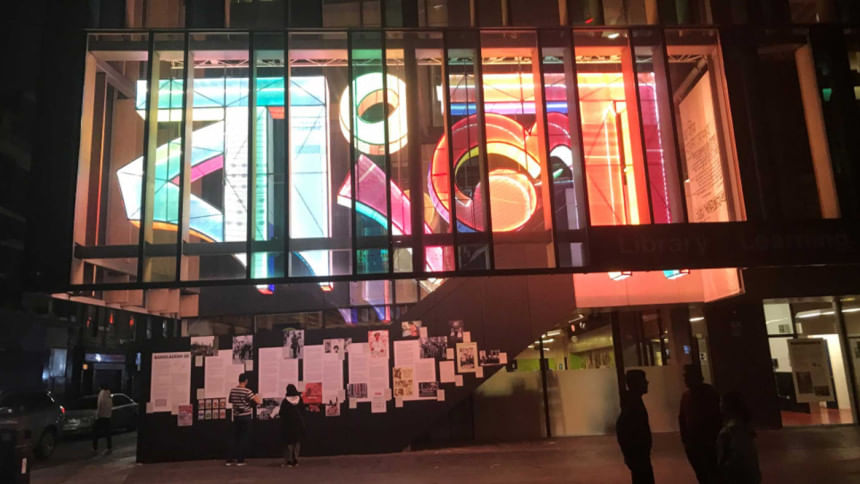The changing face of Bangladeshi diaspora

The aftermath of the Covid-19 pandemic may bring out a new generation of leaders among the expatriate Bangladeshi communities.
This assertion was made by Ripon Ray, founder of the BritBanglaCovid project, which shares the experiences of Bangalees living in Britain during Covid-19. Ray interviewed Bangladeshis primarily living in London, and also in other parts of Britain, with the aim of chronicling their experiences during the pandemic.
Bangladeshis were among the most affected ethnic groups in Britain, with a mortality rate that was three times higher than that of the general population. While the mortality among other ethnic groups—such as people from Caribbean backgrounds—steadily declined in the latter waves, deaths in the Bangladeshi community continued to be among the highest. A Bangladeshi male was five times more likely to die of the coronavirus disease during the second and third waves, compared to the wider British population. Doctors' groups in the United Kingdom have also warned that the pandemic risks entrenching long-standing racial inequalities disproportionately affecting Bangladeshi communities.
This has given rise to a new generation of leadership within the community—voices like Ripon Ray who are sensitised to the vulnerabilities of their community and their relative invisibility to Western governments. Ray's report, tabled before local governments, outlined how language services had steadily declined. This affected the messaging around vaccine uptake and the importance of safety measures like social distancing. Those over the age of 60 years were especially affected.
There was also the realisation that the written word was not always an effective way for wider reach due to many having no formal education. In future campaigns around public health or other crises, community leaders argued that there was a need to integrate oral communication on a larger scale, such as telephone or face-to-face conversations.
Similar trends were visible in the United States, especially in New York, where Bangladeshis were hit hard by the pandemic. Despite occupying the lowest socioeconomic groups, they are counted among the broad group of Asians, which includes all sorts of nationalities. Indians, for example, occupy the highest socioeconomic category, but are counted with Bangladeshis in New York. The need for a stronger representative voice is spurring a new generation of leaders in response there as well.
"We see the South Asian data and we know it's mostly us, and the city needs to acknowledge that," said Moumita Ahmed to the Gotham Gazette. Ahmed is a Bangladeshi-American activist from Queens who ran for local government. "Bangladeshis need to understand the data so the people in the community can take measures and precautions they need to take as a collective. We didn't get a chance to do that."
Much like London, specific targeting of the community through appropriate language resources was inadequate in New York. Bangla is the fourth most spoken language among foreign-born New Yorkers, but did not receive focused attention. There was also a lack of anticipation that the higher rates of diabetes, greater employment in the physical economy, and lower rates of health insurance would leave the community vulnerable. Even the food distribution services failed to take into account the need for Halal produce, leaving many people hungry during Ramadan last year.
In my home city of Sydney in Australia, local activist Sabrin Farooqui has become a conduit between the government and sections of the Bangladeshi community. Through her work with the Rohingyas, she has been critical in the government releasing funding for asylum seekers, recognising that many of them worked in the black market cash economy and, as a result, they were not eligible for government grants. But this meant they were more likely to leave their premises in search of work, potentially endangering others. Farooqui is also a senior vice-president of Labor for Refugees NSW, a team that seeks a just and fair Labor Party policy on refugees and asylum seekers. The pandemic has been better controlled in Australia with relatively few deaths. Farooqui noted that the greater focus on skilled migration in Australia meant that the local community had a higher proportion of highly educated, knowledge workers. Vaccine hesitancy among Australian-Bangladeshis, for example, has been low, unlike the trends internationally.
An aspect of Ripon Ray's work that raises some interesting implications is the fatalism around Bangladeshi communities he observed in Britain—especially among the elderly. He found that ill health and deaths were contributed to by the common attitude of having little agency in reducing the risk of death and disease. It was all up to God. This religious interpretation of predestination is familiar to all Bangladeshis, but it appeared to be especially damaging during the pandemic. This suggests that a new, younger generation of leaders will also drive some intergenerational tensions among the traditional, socially conservative Bangladeshi communities living overseas.
Ray's work has inspired further collaboration with King's College in partnership with the not-for-profit Swadhinata Trust. There are still fears that an imminent winter in the Northern Hemisphere may cost casualties in vulnerable communities where public health messaging is lax.
Regardless of where the diaspora lives, there is a broader regret about the greater distance it has engendered with their homeland. The inability to see or visit relatives has built a greater distance. The common practices of combining weddings and funerals with return visits to Bangladesh have also stalled, possibly changing such rituals in the longer run. The diaspora identity and its relationship with Bangladesh may have fundamentally changed.
But the trends identified above suggest that the tragedies experienced among Bangladeshis have energised and politicised a new generation. It may bode well for greater engagement within the Western governments in future. This is long overdue.
Dr Tanveer Ahmed is an Australia-based psychiatrist.

 For all latest news, follow The Daily Star's Google News channel.
For all latest news, follow The Daily Star's Google News channel. 



Comments